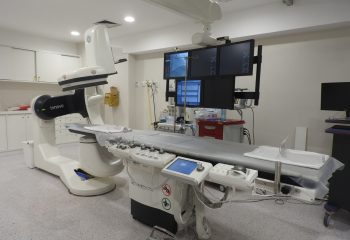Welcome to a new world!
Now go back to your reality!
Findlater v Insurance Australia Limited t/as NRMA Insurance [2020] NSWSC 1407 – Harrison AsJ – 14/10/2020.
1. On 22/01/2014, the claimant was injured in a motor cycle accident (MVA). The insurer admitted fault for the MVA. The claimant sought judicial review to set aside a Medical Assessment Service (MAS) certificate that determined the claimant’s need for neck surgery was not causally related to the MVA and his assessment of whole person impairment (WPI) was less than 10%.
2. In making this decision, the medical assessor placed relevance on the fact that the surgery had been paid by the claimant’s previous employer, the Australian Navy and he had an injury at work unrelated to the MVA.
Background
3. In September 2015, MAS issued a certificate which assessed the claimant’s neck injury less than 10% WPI.
4. In August 2019, the claimant applied for a further assessment of his injuries after he had neck surgery. The claimant’s medical evidence was to the effect that the MVA caused a worsening of a pre-existing condition that required the neck surgery.
5. In December 2019, MAS issued a certificate that the claimant’s injuries were still less than 10% WPI.
The Medical Guidelines For Assessing Causation
6. The Guidelines for causation of injury that must be used by a medical assessor are:
1.5 An assessment of the degree of permanent impairment is a medical assessment matter under clause 2 (a) of Schedule 2 of the Act. The assessment must determine the degree of permanent impairment of the injured person as a result of the injury caused by the motor accident. A determination as to whether the injured person’s impairment is related to the accident in question is therefore implied in all such assessments. Medical assessors must be aware of the relevant provisions of the AMA4 Guides, as well as the common law principles that would be applied by a court (or claims assessor) in considering such issues.
1.6 Causation is defined in the Glossary at page 316 of the AMA4 Guides as follows:
Causation means that a physical, chemical or biologic factor contributed to the occurrence of a medical condition. To decide that a factor alleged to have caused or contributed to the occurrence or worsening of a medical condition has, in fact, done so, it is necessary to verify both of the following:
1. The alleged factor could have caused or contributed to worsening of the impairment, which is a medical determination.
2. The alleged factor did cause or contribute to worsening of the impairment, which is a non-medical determination.
This, therefore, involves a medical decision and a non-medical informed judgement.
1.7 There is no simple common test of causation that is applicable to all cases, but the accepted approach involves determining whether the injury (and the associated impairment) was caused or materially contributed to by the motor accident. The motor accident does not have to be a sole cause as long as it is a contributing cause, which is more than negligible. Considering the question ‘Would this injury (or impairment) have occurred if not for the accident?’ may be useful in some cases, although this is not a definitive test and may be inapplicable in circumstances where there are multiple contributing causes.
7. Treatment is related to an injury caused by a motor accident if the accident makes a material contribution to the need for treatment.
8. In determining causation, the assessor must consider whether the treatment would not have arisen but for the occurrence of the accident:AAI Limited t/as AAMI v Phillips [2018] NSWSC 1710 at [29] per Davies J.
Associate Justice Harrison determined the medical assessor had applied the wrong test for causation:
(1) In determining causation, the medical assessor took into account a wrong consideration of who paid for the surgery;
(2) There was no evidence that the claimant’s previous employer the Navy had acknowledged that his employment had been a “very substantial contributing factor to the need for surgery”;
(3) The medical assessor did not employ the proper test to determine whether the surgery related to the injury was caused by the motor accident. The proper test involved asking whether or not the motor accident made at least a material contribution to the need for surgery. Further, the medical assessor should have considered whether the surgery would not have arisen but for the accident.
(4) The claimant was not given the opportunity to respond to the argument that the surgery did not relate to the cervical spine injury caused by the motor accident on the basis that his employer had paid for the surgery;
(5) Failure to apply cl 1.7 of the Guidelines, which recommends consideration of the question – “Would this injury have occurred if not for the accident?” The medical assessor asked himself the wrong question and, as a consequence, considered the payment for the surgery, which was irrelevant; and
(6) Failure to apply ccl 1.31 and 1.34 of the Guidelines by failing to calculate pre-existing and subsequent and unrelated impairment.
*Disclaimer:This is intended as general information only and not to be construed as legal advice. The above information is subject to changes over time. You should always seek professional advice before taking any course of action.*








